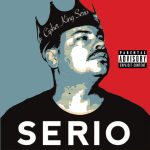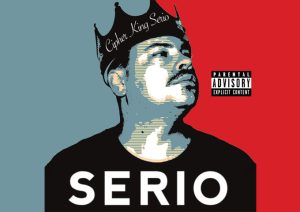Niamh Beatrix Smith—the Irish-South African prodigy known simply as Niamh Beatrix—stands as a beacon of unvarnished authenticity. At just fourteen years old, this remarkable artist, affectionately dubbed ‘Little Adele’ by the music press, has crafted something extraordinary with her latest single “Too Loud”—a track that strips away every conceivable artifice to reveal the beating heart of genuine human emotion.
“Too Loud” arrives not as a polished product of the teen pop machine, but as something far more precious and rare: an honest document of adolescent heartbreak that transcends age boundaries through its sophisticated emotional intelligence. This Americana-styled mid-tempo ballad eschews the glossy production values that typically define contemporary youth-oriented music, instead building its foundation on the interplay between delicately picked acoustic guitars and gentle piano keys that serve as the perfect backdrop for Niamh Beatrix’s extraordinary vocal performance.
The young artist’s voice becomes the true instrument of storytelling here, moving with effortless grace from intimate whispers to soaring expressions of pain. Her vocal delivery demonstrates a maturity that belies her years, capturing the fragile intensity of first love’s aftermath with a precision that many seasoned performers struggle to achieve. The dynamic range she displays—from breathy vulnerability to full-throated emotional release—creates a sonic journey that mirrors the psychological landscape of the song’s narrative.
Musically, “Too Loud” operates as a masterclass in restraint and release. The arrangement builds with calculated deliberation, allowing space for each emotional revelation to breathe before gradually layering instrumentation to support the song’s most powerful moments. The production choices reflect a sophisticated understanding of how silence and sound can work together to amplify emotional impact—the quieter passages serve not as mere contrast but as essential components of the song’s overall emotional architecture.
The Americana influences are worn lightly but effectively, providing a timeless quality that prevents the song from feeling locked into any particular musical moment. Instead, “Too Loud” exists in that rarified space occupied by songs that feel both contemporary and eternal, speaking to universal experiences while maintaining their unique artistic voice.
The lyrical content of “Too Loud” reveals Niamh Beatrix as a songwriter of remarkable sophistication, one who understands that the most profound truths often emerge from the intersection of the specific and the universal. The song operates on multiple levels simultaneously, functioning as both a breakup ballad and a meditation on the overwhelming nature of intense emotion—particularly the kind of love that becomes too much for its recipient to bear.
The central metaphor of communication breakdown runs throughout the piece, exploring how genuine feeling can become distorted or lost entirely when filtered through inadequate channels. The imagery of broken phones and static interference serves as a powerful representation of how emotional truth can be garbled in transmission, leaving both speaker and listener frustrated and disconnected. This technological metaphor gains additional poignancy when considered within the context of a generation raised on digital communication, where authentic connection often feels simultaneously more accessible and more elusive than ever before.
The song’s exploration of volume—both literal and metaphorical—reveals layers of meaning that unfold with repeated listening. The concept of being “too loud” operates as both a description of emotional intensity and a criticism received from others, capturing the painful experience of having one’s feelings dismissed as excessive or inappropriate. This theme resonates particularly strongly within the context of teenage experience, where authentic emotion is often pathologized or minimized by adults who have forgotten the legitimate intensity of adolescent feeling.
Niamh Beatrix’s lyrical approach demonstrates a poet’s sensitivity to language and imagery. Her use of contrasts—whispers against screams, silence against noise, emptiness against overwhelming feeling—creates a sonic landscape that mirrors the internal chaos of heartbreak. The recurring motif of empty rooms serves as a powerful symbol for emotional isolation, while the references to crushing words and broken voices literalize the physical impact of emotional trauma.
Perhaps most impressively, the song manages to capture the paradoxical nature of intense love—how the very qualities that make such love precious can also make it unbearable for its recipient. The title phrase becomes a judgment passed not just on volume but on the intensity of feeling itself, reflecting society’s discomfort with emotional authenticity and its preference for measured, controllable expressions of affection.
The lyrical structure mirrors the cyclical nature of obsessive thinking that characterizes the aftermath of lost love. Phrases return and evolve, much like intrusive thoughts that refuse to be dismissed, creating a musical representation of the mind’s tendency to circle back to sources of pain. This repetitive element serves not as lazy songwriting but as deliberate artistic choice, reinforcing the song’s thematic concerns through its very construction.
What makes “Too Loud” particularly remarkable is its refusal to condescend to its young creator or her potential audience. Rather than offering the simplified emotional palette typically associated with teen-oriented music, the song embraces complexity and contradiction. It acknowledges that teenage emotions, while often dismissed by adults, possess their own legitimate intensity and deserve to be taken seriously as subjects for art.
Niamh Beatrix emerges from this track as an artist unafraid to occupy difficult emotional territory, one who understands that authentic artistry requires the courage to be vulnerable in public. Her willingness to present her emotions without apology or qualification marks her as an artist of genuine substance, one whose future development promises even greater revelations.
In an era where authenticity has become a marketing buzzword, “Too Loud” offers the genuine article. The song’s power derives not from production tricks or calculated emotional manipulation but from the simple truth of lived experience rendered in compelling artistic form. Niamh Beatrix has created something that feels both immediately accessible and endlessly rewarding, a track that reveals new dimensions with each encounter.
The comparison to Adele that earned Niamh Beatrix her media nickname feels particularly apt when considering “Too Loud.” Like the British superstar, Niamh Beatrix possesses the rare ability to transform personal pain into universal art, creating songs that feel simultaneously intimate and anthemic. Her voice carries the same emotional weight and technical skill that marked Adele’s early work, while bringing her own unique perspective and artistic sensibility to the tradition of emotionally direct popular music.
In “Too Loud,” Niamh Beatrix has given us more than just another breakup song—she has offered a meditation on the nature of intense feeling and the challenges of authentic communication in a world that often prefers its emotions muted and manageable. It is the work of an artist who refuses to apologize for the depth of her feeling, and in that refusal, she has created something genuinely powerful and affecting. This is not just promising work from a young artist—this is accomplished artistry from a voice that demands to be heard.
OFFICIAL LINKS: SPOTIFY – INSTAGRAM – YOUTUBE











More Stories
“It’s Him” by Soluss: Theatrical Lyricism and Immersive Musical Vision Collide
Serio Ascends With “Cypher King Serio”: Power, Survival, and Sovereignty in Cipher King Serio
Aux Fidelity Captures Tokyo’s Pulse on Breakbeat-Driven Debut ‘Flashy Series, Vol. 1’